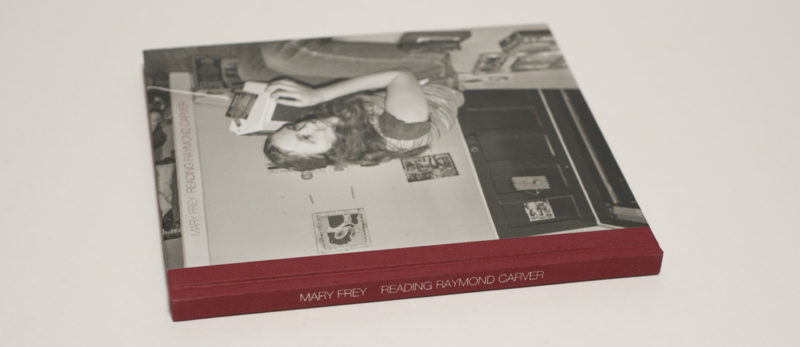One of the advantages of being a photography writer is that when faced with an issue I can — and often do — ask myself: if I were to write about this topic at hand, what I would do about it? This is not to say that as a writer I’m necessarily a different person than my usual self. But writing involves an element of impulse control: could what you have just written be different or more complex or not true? And if that’s the case, what would the repercussions be?
So were you to ask me in person, I’d tell you that, yes, there are too many photobooks. Too many because, and I think that’s just a natural way of how most people would approach dealing with such a question, it’s impossible to keep track of what’s out there. The sheer flood of announcements arriving via social media doesn’t help, either. As a consumer (ugly word, I know, but let’s just gloss over that) and a critic (ditto?), I have a very hard time keeping track. But as a critic I also know that there is a flip side to the problem, namely the fact that many more books are now being made that would not have seen the light of day before.
There is a flip side to that as well, namely that many of these books really don’t have to be made (I mean: really?). Often enough, the archives of some well known (often old white male) photographer are being dredged, and out comes another photobook. So boring! But — flip side again — there also are genuine discoveries of material by photographers who are not the usual suspects. Those discoveries make you wonder: why have these pictures been hidden away in that artist’s archive for so long? Wouldn’t it have been wonderful if they had become a part of the canon already?
A good case in point is provided by Mary Frey‘s Reading Raymond Carver. A disclaimer first: Mary is not only a colleague of mine (we taught together), she’s also a friend. What is more, when seeing the material (in the form of old contact sheets) for the very first time, I pulled out some sort of very first edit and told her there was great material for a book. So clearly, I’m biased, and this isn’t really a review.
I remember that rather heavy box of contact sheets, each one of them, if memory serves me right, with four view-camera (4×5) pictures. The material itself clearly had aged. But there was an astounding freshness to the pictures that I hadn’t quite expected. The photographs often spoke of the times when they were taken. Hair styles, clothing, wall decorations, maybe that odd eight-track tape player… But none of that truly mattered because the personal drama of those depicted could at any given moment happen somewhere next door. In fact, while I’m writing this it does happen somewhere.
By “drama” I hear mean nothing major — that wouldn’t be Mary. Instead, it’s these tiny little moments when there’s a slight rupture between two or more people that they might not even notice, the kind of rupture that only a camera can record. “For me,” Mary writes in the foreword, “a simple gesture, the quotidian moment, or a descriptive element could hold significance beyond its purpose.” Having seen the contact sheets, I know how hard she worked to achieve that goal of capturing what the camera would transform into these ruptures: for every successful attempts (that would look effortless), there were many others (that just looked like something had been photographed).
This, of course, is the real problem of large parts of photography: to put so much effort into the pictures that they don’t betray any of that. To do that with people in or outside of their homes, using a 4×5 camera and a flash — that takes some real skill and dedication. And that’s really what attracts me to these pictures here. How can they look so effortless? How is this even possible? Knowing Mary, I have some idea how she would be able to essentially disappear with her rather large camera in someone’s home, while guiding them towards the picture.
Consequently, as viewers we get to witness the spectacle of ordinary life in Reading Raymond Carver, or rather: we get to see what it looks like when a camera is used to dissect little, seemingly meaningless moments out of ordinary life. There’s a difference, and it’s this difference that makes photography what it is: a well-constructed fiction that works best when it manages to convince us that it’s not that.
Being able to see Mary’s pictures and to add them to the canon — where, I believe, they ought to be placed — is a gift for the world of photography. As is widely known, said canon is still too dominated by too few (old white male) voices. Having that canon expand not only does the medium and its neglected practitioners more justice, it also offers a — pardon the pun — fuller picture of what can be done with a camera.
“Where does the meaning of a photograph reside,” Mary asks in her foreword, “now that the intentions have faded from memory?” The answer is obvious, but it’s also filled with tremendous potential: the meaning is right here, in these pictures. We need to look and to see what these pictures do to us, do with us. Mary makes it easy for us to look past the signifiers of the past, helping us to see the larger meaning of photographs that for too long only existed in that box of contact sheets in her house.
Reading Raymond Carver; photographs and text by Mary Frey; quotes by Raymond Carver; 96 pages; Peperoni; 2017
